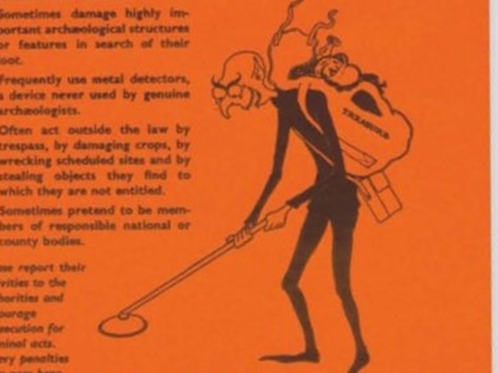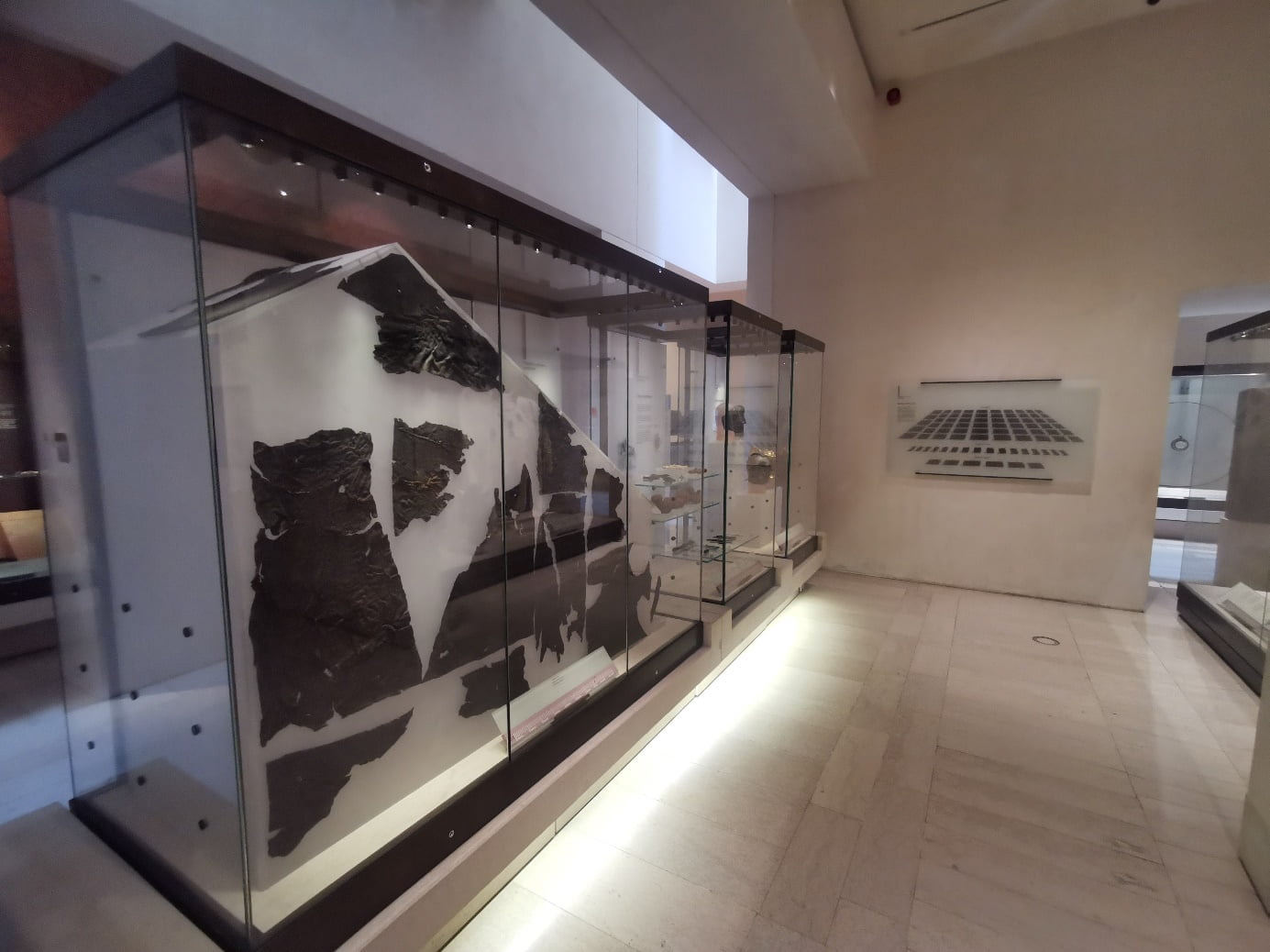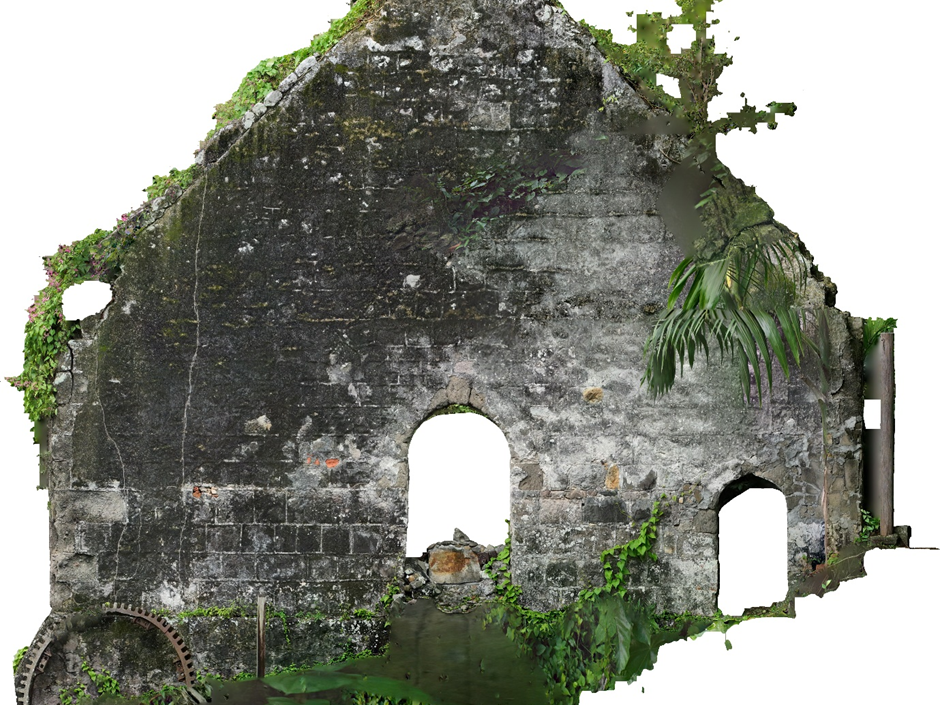The Holocene, a geological era that originated about 11,700 years ago and has persisted to the present, is a key reference point for understanding the dynamic environmental changes on Earth. As a post-glacial era, it is characterised by the deep impact of human activities on the environment, which resulted in miscellaneous effects, including climate change. Hence, studying this period is crucial to comprehending past, present, and future environmental and climate processes. In our efforts to synthesise knowledge, it is important to remember that this is essential for predicting future climate trends and formulating responses to environmental problems. Insect fossils, especially beetles, are an invaluable data source for scientists studying the Holocene. Because of their diversity, wide distribution, and ability to adapt quickly, these insects provide precise information about past environmental changes. Tucked within the sediments of the Earth, these hidden fossils contain essential information about climatic changes during the Holocene and allow scientists to reconstruct the environments of past eras (Lowe & Walker, 2015).
The present essay focuses on using insect fossils, particularly beetles, to reconstruct Holocene environments. The significance of insects as indicators of environmental change will be investigated, filling out the features of these creatures that make them suited for analysing environmental change, along with examples of the use of insect fossils for environmental reconstruction in prior eras. Further, processes for extracting and identifying insect fossils and modern technologies, such as radiocarbon dating, will be presented to establish chronologies of environmental change. The final section will discuss current challenges and future potential in this field of research.
II The role of insects as bioindicators in reconstructing Holocene environments.
Insects, particularly beetles (Coleoptera), represent a precious tool in reconstructing environmental change because of their unique characteristics. These attributes include incredible species variety, ecological diversity, and the ability to adapt quickly (Lowe & Walker, 2015), meaning that separate insect species can acclimate to shifting environmental conditions, providing vital information about past climate change (Lowe & Walker, 2015). Insects inhabit a wide range of habitats that reflect diverse environmental conditions. For example, beetles can live in various locations, from deserts to rainforests, giving them a unique ability to survive in altering environmental conditions (Coope, 2004). Adapting to a wide range of habitats enables scientists to understand past changes based on the insect fossil record.
Beetles of the genus Agabus are used to reconstruct aquatic environments, as many species of this genus are associated with specific types of aquatic habitats. For example, Agabus bipustulatus is a characteristic species for low-salt aquatic environments, while Agabus nebulosus prefers environments with higher salinities (Brooks, 1997). Beetles of the genus Carabus are used as bioindicators of forest environments. Some species, such as Carabus nemoralis, prefer moist and shady forests, while others, such as Carabus coriaceus, prefer dry and sunny forests (Thiele, 1977). Among the beetles of the family Curculionidae, many species, such as Sitona lineatus, are associated with host plants such as peas (Pisum sativum), allowing for the reconstruction of vegetation and agricultural environments (Kenis et al., 2009). Insects are relatively resistant to diagenetic processes, allowing them to be preserved in sediments for long periods, making it possible to study insect fossils in the context of the Holocene (Elias, 2010).
III Specific applications of insect fossils in reconstructing the environment of past epochs.
The considerable diversity of modern and extinct insects provides a valuable tool in reconstructing the environmental changes of past eras. The case of using beetle fossils to understand climate dynamics during the Late Glacial in Britain, discussed by Coope (2004), provides an interesting case for this approach. Coope analysed the fossils of beetles, which were common inhabitants of ecosystems at the time, to identify the rapid and dramatic temperature changes that occurred during the period under study.
The diversity and habitat specificity of these insects provided detailed information about the climatic conditions of the time.
This type of study emphasises the value of insect fossils as tools for reconstructing environmental change. Knowing the specific habitat preferences of insects allows us to understand how environmental conditions have changed over time and how they have affected the spread of different species. As detailed historical records, insect fossils also provide an understanding of the dynamics of these transformations, which is crucial for forecasting future climate change (Coope, 2004; Elias et al., 2001).
IV Description of methods for the extraction and identification of insect fossils
Methods for extracting insect fossils from Holocene sediments focus on separating organic and mineral material. Techniques used include flotation, which involves washing sediment samples to separate lighter organic fragments, such as insect carapace fragments, from heavier minerals (Coope, 2004). Sieves of different mesh sizes are often added to this method to separate fossils of different sizes (Elias, 2010). Once extracted, the fossils must be appropriately identified, using vital morphological features that allow identification to the genus or species level (Buckland & Buckland, 2006). The considerable diversity of species of insects means that researchers often rely on specialist literature and comparisons with well-preserved reference fossils (Coope, 2004). Microscopic methods are indispensable in accurately identifying specific anatomical elements, such as wing zones, which are critical for correct classification (Elias, 2010). Thanks to modern tools, such as scanning electron microscopy (SEM), we can obtain extremely high-resolution images, allowing a meticulous study of morphological structures (Elias, 2010).
In addition, identification methods are continually being improved by molecular techniques that allow the identification of fossils based on DNA sequences (Elias, 2010). Although these techniques are relatively new and their application is still limited, increasing advances in this field means they may become an increasingly important tool in the future. Overall, the methodology of insect fossil extraction and identification is a complex process that combines various techniques and approaches, and its
success depends on understanding insects' unique biology and morphology (Elias, 2010). Despite this, it is an essential tool that enables scientists to reconstruct Holocene environments from insect data.
V Using technology to establish a chronology of environmental change in the Holocene.
Extracting and identifying insect fossils is one thing, but understanding exactly when these insects lived and their defined environment is another challenge. Numerous chronological methodologies are employed within the scientific domain, a prominent one being radiocarbon dating (Bronk, 2009). Nonetheless, this procedure bears certain constraints. Radiocarbon dating exhibits optimum efficacy for substances approximating 50,000 years in age. Regarding the Holocene epoch, encapsulating the preceding 11,700 years, the precision of this technique may be compromised by oscillations in atmospheric carbon-14 concentrations (Bronk, 2009). Scholars employ radiocarbon date calibration to circumvent such limitations, juxtaposing radiocarbon-derived dates against those procured from alternative autonomous sources, such as dendrochronology (Bronk, 2009).
Alongside radiocarbon dating, many supplementary dating methodologies are utilised, luminescence dating being a noteworthy example. This technique quantifies the light discharged by minerals such as quartz or feldspar, constituents of sedimentary deposits and entomological fossils. This luminescence emanates from the mineral's exposure to radioactive decay, a process that incrementally accumulates over time. By gauging this luminescent output, scientists can ascertain when the mineral was last subject to solar irradiation, thereby providing insights into the deposition timeline of sediments (Rhodes, 2011).
VI Case study.
In the context of using insect fossils to reconstruct Holocene environments, it is beneficial to analyse detailed case studies that provide valuable data and help understand climate change's impact on different ecosystems. The research case from Llanilid in South Wales, UK, is an excellent example of this (Walker & Coope, 2003).
The Walker and Coope research team analysed several environmental indicators for the Late Devensian and Early Holocene periods. They used coleopterological analysis for the study of beetles to analyse insect fossils (Walker & Coope, 2003). Through this technique, 151 Coleoptera taxa were identified,
including ten not currently found in the British Isles, although they are present in the modern Fennoscandian fauna (Walker & Coope, 2003). These data have also helped to reconstruct climatic changes in the Holocene and Late Glacial. They show that a sudden temperature change of about 9°C marked the onset of the Holocene around 11,400 years ago, resulting in the rapid expansion of birch forests (Walker & Coope, 2003).
VII Synopsis of present impediments and prospective advances in this sphere of inquiry.
Despite the immense promise held by entomological fossils in paleoenvironmental studies, several obstacles persist that investigators must surmount. The foremost among these is the deficient comprehension of the colossal heterogeneity among insect species, rendering the taxonomical classification of fossils a complex task. This predicament is further exacerbated due to the extinction or significant evolutionary transitions of numerous insect species during the Holocene, thereby obstructing their identification based on contemporary taxa (Elias, 2010).
Moreover, while tools such as radiocarbon dating provide invaluable insights, they can have flaws. They may exhibit shortcomings, including dating range limitations or the susceptibility to extrinsic factors impacting the accuracy of radiocarbon measurements. Despite these constraints, the potency of insect fossils as an instrument for reconstructing Holocene climates is immense. An escalating body of research is pivoting towards employing insects as sentinels of environmental transitions, indicative of a sustained growth trajectory for this field. Furthermore, technological advancements, including molecular techniques for fossil identification, may expedite progress in this realm (Elias, 2010). With the continued refinement of these methodologies, insect fossils could emerge as an even more indispensable resource in paleoenvironmental research, enabling scientists to delineate past environmental shifts with enhanced granularity and precision.
Bronk Ramsey, C. (2009). Bayesian Analysis of Radiocarbon Dates. Radiocarbon, 51(1), 337-360.
Buckland, P. I., & Buckland, P. C. (2006). BugsCEP Coleopteran Ecology Package. IGBP PAGES/World Data Center for Paleoclimatology Data Contribution Series 2006-116.
Buckland, P.C., Panagiotakopulu, E., & Sveinbjarnardóttir, G. (2008). A failed invader in the North Atlantic, the case of Aglenus brunneus Gyll. (Col., Colydiidae), a blind flightless beetle from Iceland. Springer Science+Business Media B.V.
Coope, R. (2004). Quaternary climatic changes– what can we learn from history? ESS Bulletin - Volume 2 Number 2, Centre for Quaternary Research, Royal Holloway, University of London, United Kingdom.
Coope, G.R. (2004). Several million years of stability among insect species because of, or in spite of, Ice Age climatic instability? Philosophical Transactions of the Royal Society of London. Series B: Biological Sciences, 359(1442), 209-214.
Elias, S.A., Short, S.K., Nelson, C.H., & Birks, H.H. (2001). Life and times of the Bering land bridge. Nature, 382(6586), 60-63.
Elias, S.A. (2010). Advances in Quaternary Entomology (Vol. 12). Elsevier.
Kenis, M., Auger-Rozenberg, M., Roques, A., Timms, L., Péré, C., Cock, M. J., Settele, J., Augustin, S., Lopez-Vaamonde, C. (2009). Ecological effects of invasive alien insects. Biological Invasions, 11(1), 21–45.
Lowe, J.J., & Walker, M.J.C. (2015). Reconstructing Quaternary Environments John Lowe and Mike Walker. Third edition. New York: Routledge.
Panagiotakopulu, E., & Buckland, P.C. (2016). A thousand bites e Insect introductions and late Holocene environments. Elsevier Ltd.
Rhodes, E. J. (2011). Optically Stimulated Luminescence Dating of Sediments over the Past 200,000 Years. Annual Review of Earth and Planetary Sciences, 39, 461-488.
Walker, M.J.C., Coope, G.R., & Lowe, J.J. (1993). The Devensian (Weichselian) Lateglacial Palaeoenvironmental Record from Gransmoor, East Yorkshire, England. Quaternary Science Reviews, Vol. 12, pp. 659--680. Elsevier Science Ltd.
Walker, M.J.C., Coope, G.R., Sheldrick, C., Turney, C.S.M., Lowe, J.J., Blockley, S.P.E., & Harkness, D.D. (2003). Devensian Lateglacial environmental changes in Britain: a multi-proxy environmental record from Llanilid, South Wales, UK. Quaternary Science Reviews 22, pp. 475–520.
Thiele, H. U. (1977). Carabid Beetles in Their Environments: A Study on Habitat Selection by Adaptations in Physiology and Behaviour. Berlin, Heidelberg: Springer.




